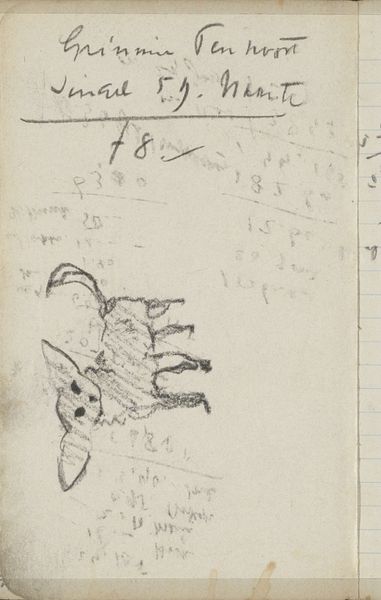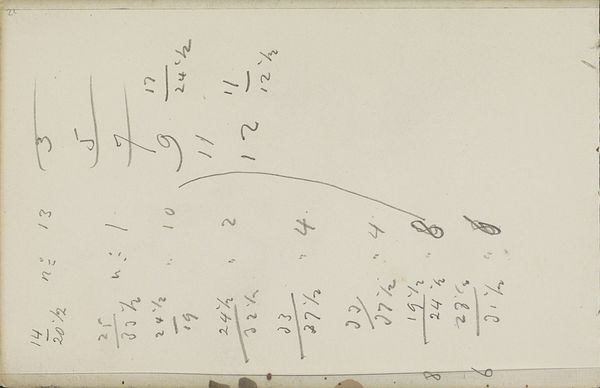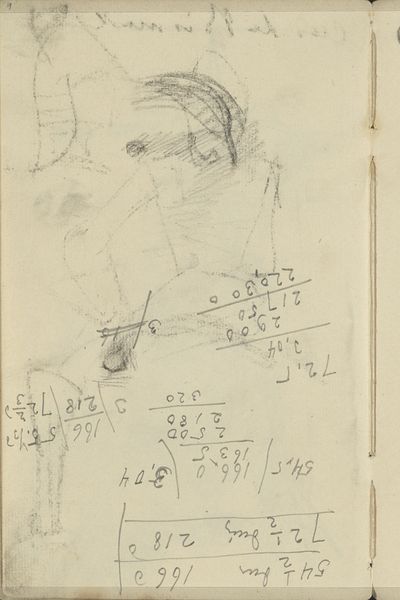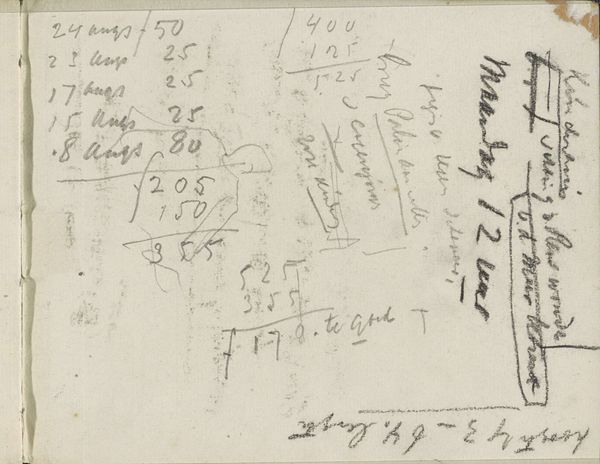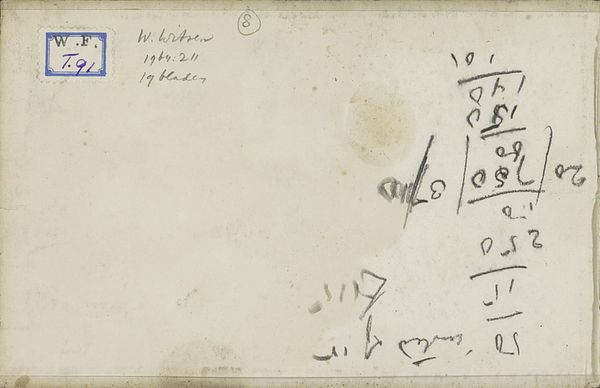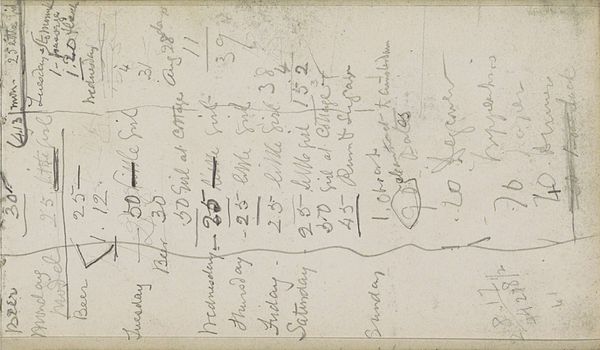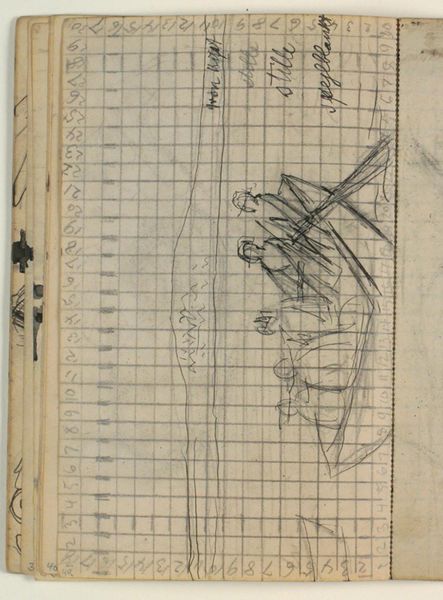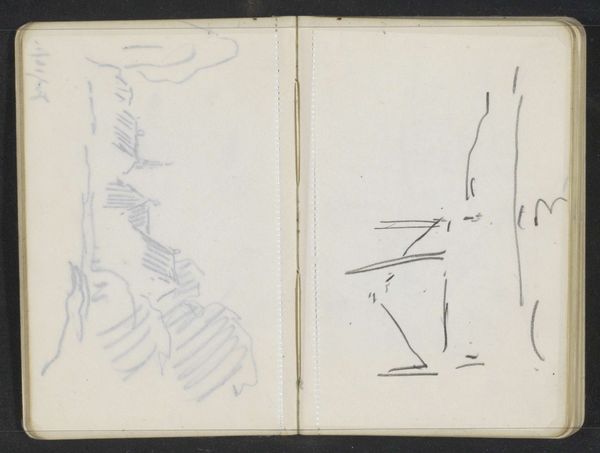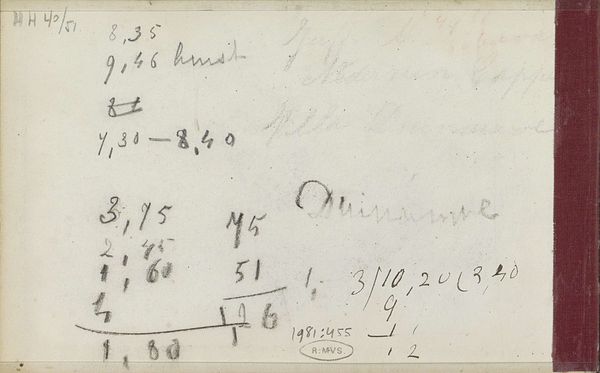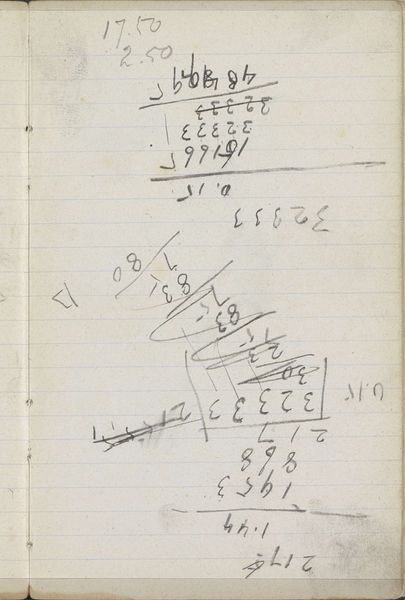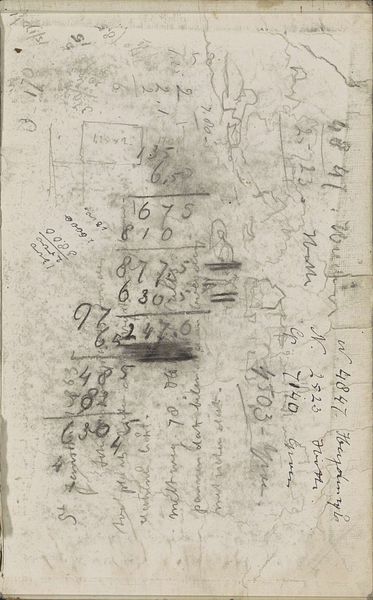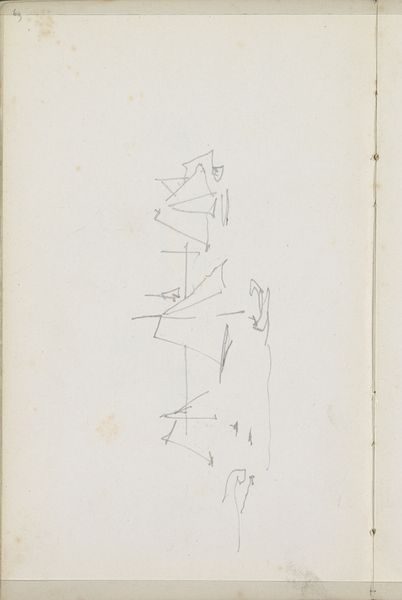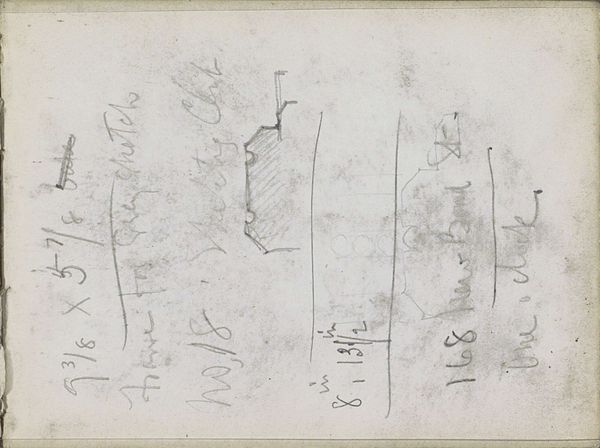![Tree [verso] by Robert Hogg Nisbet](/_next/image?url=https%3A%2F%2Fd2w8kbdekdi1gv.cloudfront.net%2FeyJidWNrZXQiOiAiYXJ0ZXJhLWltYWdlcy1idWNrZXQiLCAia2V5IjogImFydHdvcmtzLzVhMTEwNGEyLWFlMzUtNDY0ZS04YjBkLTExZThiYWZjZDFkYi81YTExMDRhMi1hZTM1LTQ2NGUtOGIwZC0xMWU4YmFmY2QxZGJfZnVsbC5qcGciLCAiZWRpdHMiOiB7InJlc2l6ZSI6IHsid2lkdGgiOiAxOTIwLCAiaGVpZ2h0IjogMTkyMCwgImZpdCI6ICJpbnNpZGUifX19&w=1920&q=75)
drawing, paper, ink
#
drawing
#
landscape
#
paper
#
ink
#
line
Dimensions: overall: 11.2 x 13.7 cm (4 7/16 x 5 3/8 in.)
Copyright: National Gallery of Art: CC0 1.0
Curator: Here we have a piece called "Tree [verso]" by Robert Hogg Nisbet. It’s an ink drawing on paper, seemingly created with simple, direct lines. What’s your initial reaction? Editor: It’s… intriguing. Stark, almost like a quick diagram. The linework detailing the tree’s form clashes against what looks like mathematical calculations and geometric sketches surrounding the central image. Curator: Yes, it is an unconventional landscape depiction, seemingly composed of what was on hand and present in that very moment. Nisbet probably was utilizing whatever scrap of paper that was there in front of him in that moment. This piece compels one to question traditional artistic boundaries, asking what constitutes art when embedded within the ordinary materials of life. Editor: Absolutely. There's a story here, a tension between nature and culture, represented by the spontaneous rendering of the tree juxtaposed with, equations. What context can we place it within? The note that says “Clarke 1940 full and..." feels key. It seems like these materials aren't coincidental. The context within which these raw materials were used reflects back to what meaning-making the artist, Nisbet was trying to do in that moment. Curator: I agree. Nisbet was using readily available materials for what might have been both intellectual exploration and artistic expression. The intersection reflects the social and the academic converging, using nature as inspiration. Editor: Precisely! It humanizes artistic creation, displaying labor and thought processes behind this composition. Also the inscription "1/4" implies labor in relation to a unit of measure, what is labor if not the making, calculation and the act of doing which Nisbet is revealing right here on this plane of paper? Curator: That reading opens up so many interesting lines of inquiry. The seemingly disconnected calculations now resonate differently, almost like attempts to quantify, control, and understand both the natural and the conceptual world through rational, symbolic manipulation and creation. Editor: It’s this contrast between organic form and these numerical equations that really fascinates me. It's also how it reveals an artmaking through mundane methods that emphasizes identity formation, and the labor that is related with production. It feels relevant even today. Curator: It provides insight into artistic practices as daily living and thinking. Editor: An interesting collision to reveal that every making has a history.
Comments
No comments
Be the first to comment and join the conversation on the ultimate creative platform.
